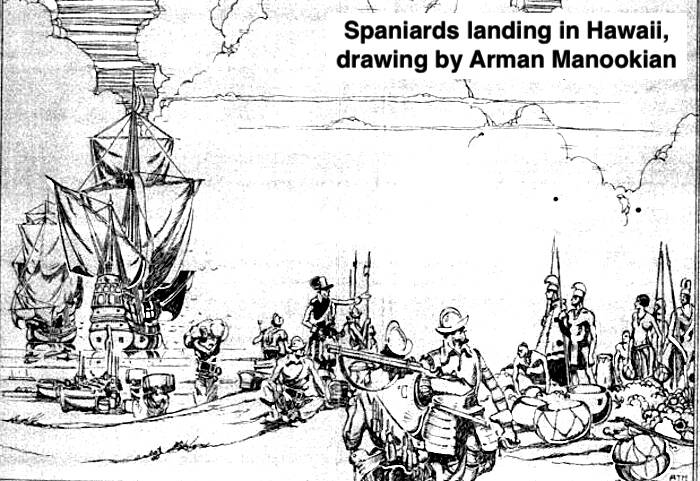Hawaiian historian Samuel Kamakau (1815-1876) wrote numerous articles on the history and culture of his people that were translated into English and published in “Ruling Chiefs of Hawai‘i.”
In “Ruling Chiefs of Hawai‘i,” Kamakau wrote that Spaniards had visited Hawai‘i sometime between 1375 and 1405 A.D., when Kahoukapu ruled on Hawai‘i.
Sources other than Kamakau also state Spaniards had visited Hawai‘i, and a Spanish map, document, and an artifact found in Hawai‘i appear to substantiate them.
But, those other sources indicate Spaniards had visited Hawai‘i during the 1500s, about a century later than Kamakau specified.
Kamakau also argued the Spanish brought with them the Roman Catholic form of worship, which was integrated into the image worship of the Hawaiians.
He wrote, “The Roman Catholic form of worship resembles the ancient Hawaiian. It is therefore argued that the Roman Catholic came with the Spanish ships and the Christian and pagan forms of worship were mixed together. There are indeed a few things which show clearly that the Christian form of worship was mixed with the native at that time.
“In the first place, the action of the whole congregation in pointing the right hand to heaven when praying in unison, so testifying that God is in the heavens. Second, the erecting of images outside the luakini and other heiaus in order to give an appearance inspiring fear and awe, and the decorating of images with beautiful flowers from the wildwood, like the ‘ie‘ie vine, the palai fern, leaves of the pala fern, and other wild plants.
“Third, the manner in which the priest goes to worship; upon approaching the altar he bends his knees, kneels, and then offers prayers after which he stands up and sprinkles the altar with the purifying water … then faces the audience and sprinkles them with this water to purify them from sin and uncleanness. On the altars and places of sacrifice in the ancient luakini and other heiaus there were crosses. The place occupied by the kahuna was laid smooth with stones in the shape of a cross.”





